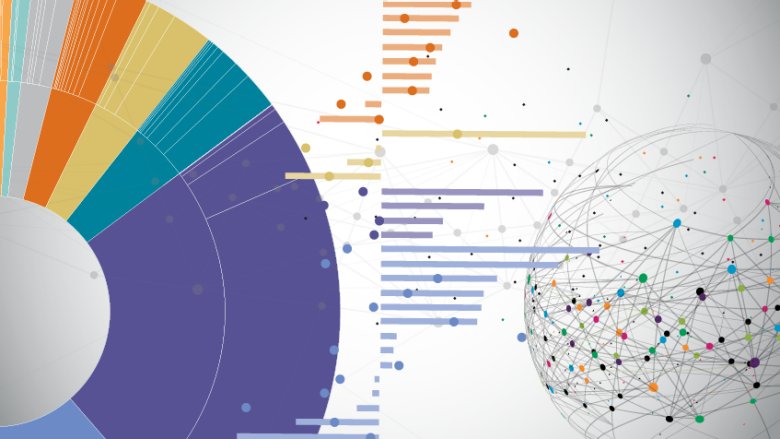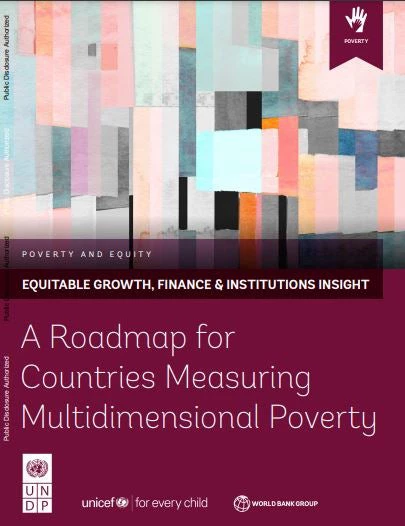The Multifaceted Nature of Poverty: A Global Perspective
- Publication date January 18, 2024
Poverty, a pervasive issue affecting societies around the world, defies a one-size-fits-all definition. Understanding how poverty is measured and perceived across different nations provides insights into the complexities of economic well-being and the challenges in addressing material deprivation globally.
Absolute vs. Relative Measures of Poverty
In the United States, the absolute measure of poverty, which sets a fixed threshold to define poverty, does not account for differing costs of living across the country or the varying needs based on family size and age. This measure, while providing clarity, may not fully capture the nuances of economic hardship.
Conversely, many European countries, including Denmark, employ a relative measure of poverty, which considers a household as poor if its income falls below a certain percentage of the median income. This approach takes into account the overall wealth of the society and changes as overall income levels rise or fall.
Comparative Wealth and Living Standards
The disparity between poverty in developed and developing countries is stark. A household earning $23,030 in the United States might struggle to meet basic needs, while the same income could secure a comfortable standard of living in countries like China or India, due to lower costs of living.
However, in countries like Denmark, where median incomes are high and social safety nets are robust, families earning below 50% of the median income are considered poor, despite receiving comprehensive healthcare and education services.
Government Services and Economic Expectations
The role of government in providing services heavily influences the perception of poverty. In richer countries with higher living costs, governments often provide more comprehensive social services, raising the baseline of what is considered a necessity. In contrast, in poorer countries, minimal government assistance and lower living costs set a different standard for what constitutes poverty.
International Poverty Lines and Indices
Organizations like the United Nations and the World Bank have developed indices and poverty lines to facilitate global poverty comparisons. The Human Development Index considers factors beyond income, such as education and healthcare, to gauge the standard of living. The World Bank uses an absolute measure of poverty, defining extreme poverty as living on less than $1.90 a day, to reflect the direst conditions of living.
The Organisation for Economic Co-operation and Development (OECD) provides a relative comparison among developed nations, focusing on median income percentages to define poverty.
Cultural Differences and Survival Needs
Cultural norms and values significantly impact what is considered necessary for survival in different countries. For example, the lack of running water or electricity might define poverty in some African nations, while in developed countries, poverty might include having these services but struggling to afford other basic needs like healthcare.
Conclusion: No Single Definition Suffices
The definition of poverty is complex and multifaceted, varying greatly depending on the local context, economic development, cultural values, and governmental roles. While international measures provide a framework for comparison, they cannot fully encapsulate the lived experience of poverty. As the world strives to address poverty, it becomes clear that solutions must be as diverse and nuanced as the definitions themselves, tailored to the unique circumstances of each society. Understanding poverty’s multifaceted nature is crucial in crafting effective policies and interventions to uplift those living on the margins.

Multidimensional Poverty Measure

What is the Multidimensional Poverty Measure?
- • An index that measures the percentage of households in a country deprived along three dimensions –monetary poverty, education, and basic infrastructure services – to capture a more complete picture of poverty
- • A means to capture the complexity of poverty that considers dimensions of well-being beyond just monetary poverty
The Multidimensional Poverty Measure ( MPM) seeks to understand poverty beyond monetary deprivations (which remain the focal point of the World Bank’s monitoring of global poverty) by including access to education and basic infrastructure along with the monetary headcount ratio at the $2.15 international poverty line.
The World Bank’s measure takes inspiration and guidance from other prominent global multidimensional measures, particularly the Multidimensional Poverty Index (MPI) developed by the United Nations Development Programme (UNDP) and Oxford University, but includes monetary poverty less than $2.15 per day, the international poverty line at 2017 PPP (Purchasing Power Parity), as one of the dimensions. Under this broader definition of poverty, many more people come into view as poor .
While monetary poverty is strongly correlated with deprivations in other domains, this correlation is far from perfect. The Poverty, Prosperity, and Planet Report ( World Bank, 2024 ) shows that about 1 in 10 people globally is multidimensionally poor. Deprivations in nonmonetary dimensions like access to schooling and basic infrastructure, compound poverty and perpetuate cycles of inequality. Securing higher living standards for a population becomes more challenging when poverty in all its forms is considered, but it can provide policymakers with a roadmap for and a means of monitoring improvements in welfare.
Explore the latest Multidimensional Poverty (MPM) data
The October 2024 update presents the 8th edition of the World Bank’s Multidimensional Poverty Measure (MPM), which includes the latest estimates for 110 economies. A full list of 157 countries with the latest and historical MPM data is available below. Major updates to the MPM database happen around spring every year, with the possibility of a smaller update in September some years.
Learn more about the MPM methodology and the latest edition of the database in this brief .
Download the latest data on the multidimensional poverty measure
(available in .pdf and .xlsx ).
Download historical MPM data
All historical spells
Last Updated: October 2024
Interactive dashboards for visualizing the latest MPM data and exploring MPM with different weights and deprivation thresholds
Source: World Bank, 2020
Summarizing the information on the different deprivations into a single index proves useful in making comparisons across populations and across time. However, any aggregation of indicators into a single index always involves a decision on how each indicator is to be weighted.
Not all countries have current and comparable data on all the above dimensions, making it challenging to construct a multidimensional poverty measure, especially at the global level. More details on the methodology of the MPM are available here.
What does multidimensional poverty look like around the world?
At a global level, the share of the poor is 64 percent higher when education and basic infrastructure are added alongside monetary poverty — from 8.8 percent living below $2.15 per day to 14.5 percent. By comparing the monetary poverty dimension with indicators from other dimensions, it is possible to form a picture of how many multidimensionally poor are not captured by monetary poverty, as well as which indicator deprivations most affect well-being in the different regions (See Table 2). Indeed, almost four out of 10 (39 percent) multidimensionally poor persons are not captured by monetary poverty because they are deprived in nonmonetary dimensions alone.
Table 2. Monetary and Multidimensional Poverty Headcount, by Region and the World, circa 2021
Source: Global Monitoring Database, October 2024.
Note : The multidimensional poverty rate is the share of the population defined as multidimensionally poor. The monetary poverty rate is based on the $2.15 international poverty line. Regional and total estimates are population-weighted averages of survey-year estimates for 110 economies. Number of economies is the number of economies in each region for which information is available in the window between 2018 and 2024, for a circa 2021 reporting year.
a. Population coverage refers to the population that is covered by a recent survey (in 2020 or later) using the coverage rule described in Section 1.4 of the above What’s New Brief . Regions without sufficient population coverage are shown bolded.
The Multidimensional Poverty Measure was created by the Global Poverty Working Group (GPWG), an interdisciplinary technical working group established to improve the quality and frequency of poverty and inequality data, comprising members from the Poverty and Equity Global Practice and the Development Economics Vice Presidency Data Group (DECDG) and Research Group (DECRG).
Citation and Attribution:
When using the Multidimensional Poverty Measure, please cite as: Multidimensional Poverty Measure database (8th edition, circa 2021), World Bank, Washington, DC. 2024. https://www.worldbank.org/en/topic/poverty/brief/multidimensional-poverty-measure
Data Source
The Global Monitoring Database (GMD) is the World Bank’s repository of multitopic income and expenditure household surveys used to monitor global poverty and shared prosperity. The household survey data are typically collected by national statistical offices in each country, and then compiled, processed, and harmonized. The process is coordinated by the Data for Goals (D4G) team and supported by the six regional statistics teams in the Poverty and Equity Global Practice. The Global Poverty & Inequality Data Team (GPID) in the Development Economics Data Group (DECDG) also contributes historical data from before 1990 and recent survey data from the Luxemburg Income Study (LIS). Selected variables have been harmonized to the extent possible such that levels and trends in poverty and other key sociodemographic attributes can be compared across and within countries over time. The GMD’s harmonized microdata are currently used in the Poverty and Inequality Platform (PIP), the World Bank’s Multidimensional Poverty Measure (MPM), the Global Database of Shared Prosperity (GDSP), and Poverty and Shared Prosperity Reports. Additional information on the latest country data can be found in Castaneda et al., 2024 .
Database and Methodology:
Data for Goals (D4G) at [email protected]
Media inquiries:
Paul Clare, Senior External Communications Officer at [email protected]
- Show Less -
- EXCEL DATABASE Download the latest data on the Multidimensional Poverty Measure
- PAPER What’s New: Update to the Multidimensional Poverty Measure (October 2024)
This site uses cookies to optimize functionality and give you the best possible experience. If you continue to navigate this website beyond this page, cookies will be placed on your browser. To learn more about cookies, click here .
- Tools and Resources
- Customer Services
- Food and the Humanities
- Food History and Anthropology
- Food Politics and Policy
- Food Science
- Food Globalization and Industrialization
- Conflict Studies
- Development
- Environment
- Foreign Policy
- Human Rights
- International Law
- Organization
- International Relations Theory
- Political Communication
- Political Economy
- Political Geography
- Political Sociology
- Politics and Sexuality and Gender
- Qualitative Political Methodology
- Quantitative Political Methodology
- Security Studies
- Share Facebook LinkedIn Twitter
Article contents
Measuring global poverty.
- Shatakshee Dhongde Shatakshee Dhongde School of Economics, Georgia Institute of Technology
- https://doi.org/10.1093/acrefore/9780190846626.013.259
- Published in print: 01 March 2010
- Published online: 22 December 2017
Economists have long been preoccupied with trying to understand the nature and causes of poverty. From Adam Smith to David Ricardo, Thomas Malthus, Karl Marx, and John Stuart Mill, a common belief among economists is that the benefits of economic growth are rarely experienced by the poorer sections of society. An important issue is how to measure global poverty accurately. International organizations such as the United Nations and the World Bank have endeavored to measure global poverty since the adoption of the Millennium Development Goals (MDG), stated in the UN’s Millennium Declaration which was adopted in 2000 by 189 nations. However, measuring global poverty is far from simple. Estimates of poverty and particularly of global poverty are very sensitive to the underlying assumptions, such as the notion of poverty itself, the choice of welfare indicator, the unit of measurement used, and purchasing power parity rates. One of the significant advances in global poverty studies was the World Bank’s introduction of a poverty line in the 1990 World Development Report (WDR). Despite these efforts, the precise number of poor in the world remains ambiguous. Nevertheless, emerging frontiers in poverty analysis indicate new interest in measuring poverty more broadly. Some ideas that may dominate the future of poverty research include multidimensional poverty, vulnerability to poverty, and chronic poverty.
- global poverty
- poverty line
- purchasing power parity
- poverty measurement
- multidimensional poverty
- vulnerability to poverty
- chronic poverty
- Millennium Development Goals
You do not currently have access to this article
Please login to access the full content.
Access to the full content requires a subscription
Printed from Oxford Research Encyclopedias, International Studies. Under the terms of the licence agreement, an individual user may print out a single article for personal use (for details see Privacy Policy and Legal Notice).
date: 24 October 2024
- Cookie Policy
- Privacy Policy
- Legal Notice
- Accessibility
- [66.249.64.20|81.177.180.204]
- 81.177.180.204
Character limit 500 /500


Measuring poverty’s multiple dimensions: New guidance for countries developing Multidimensional Poverty Measures
Enrique delamónica, mansour ndiaye, maria ana lugo, silvia malgioglio.

Over the last few decades, economists, policymakers, and researchers’ debates have focused on the importance of looking at wellbeing through a broader lens, thus incorporating in the measurement of poverty aspects of life such as access to quality education, healthcare, or sanitation in addition to monetary measures. Substantial deprivation in these areas can lead to what is now commonly referred to as multidimensional poverty. Multidimensional poverty was officially adopted by the UN as one of the Sustainable Development Goals (SDG) indicators in 2017 , and is defined as “SDG 1.2.2: Proportion of men, women, and children of all ages living in poverty in all its dimensions according to national definitions.” Unlike most other indicators in the Global SDG Indicator Framework, SDG 1.2.2 doesn’t follow a globally mandated methodology, and each country is therefore expected to define and report its own national measure of multidimensional poverty.
As partner agencies supporting member states in their custodianship of SDG 1.2.2., UNDP, UNICEF, and the World Bank worked together to enable reporting of official measures of national multidimensional poverty, through a platform established in April 2020. So far, national multidimensional poverty data for more than 63 countries are available in the United Nations Global SDG Indicator Database, an open data repository tracking country progress on the 2030 Agenda.
The three agencies have jointly produced a Roadmap for governments seeking to design and adopt a national measure of multidimensional poverty. The document presents possible avenues and a roadmap for approaching the process: the rationale for developing such measure, an overview of the main approaches, and a general guideline for the steps to follow. Several real country examples are presented to highlight the different possible outcomes of the decision-making process required to adopt a successful national measure of multidimensional poverty. The Roadmap also takes stock of the dimensions and indicators adopted by different countries so far, for measures of both adult and child multidimensional poverty.
How is multidimensional poverty measured?
There is no single formula that is universally accepted as official. Furthermore, the areas of deprivation (dimensions) and the types of data used to calculate multidimensional poverty (data sources) vary greatly from country to country as they are very specific to each context. While some early adopters have now published several rounds of multidimensional poverty data, the majority of countries are yet to introduce this type of measurement and many are in exploratory phases to put one in place.
Despite dissimilarities in their design across countries, there are several established approaches that have been adopted and adapted successfully.
Is Multidimensional Poverty a one-size-fits-all measure?
No. It is understood that significant adaptation is required to ensure that measures of multidimensional poverty are fit for purpose in different contexts. In addition, children experience poverty differently from adults and therefore have different needs—in terms of nutrition or education, for example—that countries might take into account through a specific measure of child multidimensional poverty, which may incorporate different dimensions and indicators to the country’s measure of multidimensional poverty for the general population.
So how to get started?
Designing a national measure of multidimensional poverty is a process that involves several important decisions at various levels of government. Broadly speaking, the process can be broken down into six steps:
- Identifying the measurement unit (household or individual, children or adults, or everyone);
- Selecting dimensions and measurable indicators relevant to how poverty can be experienced in the country context;
- Defining of thresholds for each indicator to determine when a person (or household) would be considered deprived;
- Adding up the deprivations across indicators for each person (or household).
- Defining who is considered multidimensionally poor by selecting a “poverty cut-off” related to the number of deprivations a person (or household) has.
- Adding up the number of persons (or households) considered to be multidimensionally poor.
Intended as an accessible document that can easily be read and understood, the Roadmap presents a detailed overview of these steps and offers extensive references for any country wishing to get started in the process of designing a national measure of multidimensional poverty. It does so through a literature review of theoretical perspectives which have practical applications and offers opportunities to learn from other countries’ experiences.
As partner agencies for SDG Indicator 1.2.2, the World Bank, UNDP, and UNICEF are committed to working closely with national statistical offices and relevant national entities to strengthen capacities to produce high-quality national measures of multidimensional poverty and to assist them in meeting the data reporting requirement of the global SDG indicator framework.
- The World Region
Get updates from Data Blog
Thank you for choosing to be part of the Data Blog community!
Your subscription is now active. The latest blog posts and blog-related announcements will be delivered directly to your email inbox. You may unsubscribe at any time.

Senior Adviser Statistics and Monitoring (Child Poverty and Gender Equality) Data & Analytics Section, Division of Data, Analytics, Planning & Monitoring, UNICEF

Global Head of Inclusive Growth, Inclusive Growth Team, UNDP

Senior Economist, World Bank

Social Scientist, Poverty and Equity Global Practice
Join the Conversation
- Share on mail
- comments added

IMAGES
VIDEO
COMMENTS
This paper, therefore, examines the characteristics of poverty and their implication for poverty analysis. This paper is significant in that it pieces together fragmented literature on the characteristics of poverty. In so doing, it provides a more holistic picture of the characteristics of poverty.
poverty, how measure poverty, setting poverty lines, poverty indices and their comparisons, inequality measures, poverty profiles, the determinants of poverty, and how poverty analysis is linked to poverty reduction policies.
Introducing a multidimensional poverty measure that is anchored on household consumption and the International Poverty Line, but broadens the measure by including information on access to education and utilities.
Prevailing measures on the topics of monetary and non-monetary poverty—as well as economic and carbon inequality—are being critically assessed under sustainable development goals (SDGs) with a worldwide perspective.
By all measures, poverty today is predominantly rural. 70 percent of the extreme poor live in rural areas; 60 percent work in agriculture. Women, people with disabilities, children, ethnic and linguistic minorities and indigenous people are all disproportionally represented in poor populations.
The first target under Sustainable Development Goal (SDG) 1 of the 2030 Agenda for Sustainable Development reads: “By 2030, eradicate extreme poverty for all people everywhere, currently measured as people living on less than $1.25 a day.”
The Human Development Index considers factors beyond income, such as education and healthcare, to gauge the standard of living. The World Bank uses an absolute measure of poverty, defining extreme poverty as living on less than $1.90 a day, to reflect the direst conditions of living.
The MPM is composed of six indicators: consumption or income, educational attainment, educational enrollment, drinking water, sanitation, and electricity. These are mapped into three dimensions of well-being: monetary, education, and basic infrastructure services.
Why is it so difficult to measure poverty at global level? What are the conceptual issues involved in measuring poverty globally? What type of data is used to estimate global poverty? How reliable are the estimates of global poverty? This essay reviews literature on global poverty in search of answers to these and similar questions.
Broadly speaking, the process can be broken down into six steps: Identifying the measurement unit (household or individual, children or adults, or everyone); Selecting dimensions and measurable indicators relevant to how poverty can be experienced in the country context;